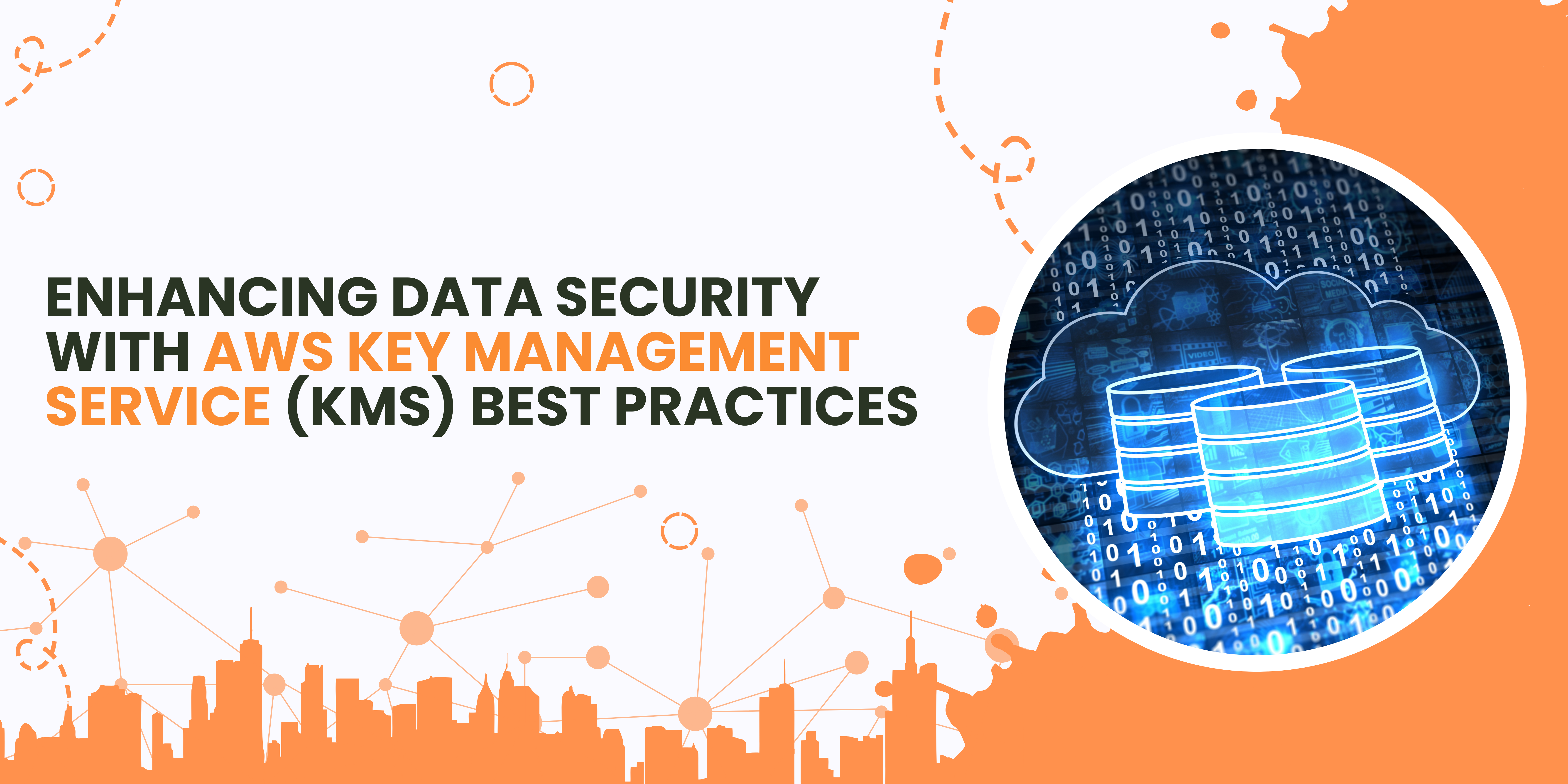Securing data in the cloud is of utmost importance for organizations of all sizes. AWS Key Management Service (KMS) offers robust encryption and key management capabilities, enabling organizations to protect their sensitive data stored in AWS services. However, simply using AWS KMS isn’t enough—adopting AWS KMS best practices ensures that your data remains secure and compliant with industry standards.
AWS managed service simplifies the process of creating and controlling encryption keys used to encrypt your data. With KMS, you can manage customer master keys (CMKs) across a wide range of AWS services, ensuring that your data remains encrypted both at rest and in transit.
Key Best Practices for AWS KMS Security
- Use Multi-Region Keys: If your application is deployed across multiple AWS regions, consider using multi-region keys. This approach allows you to replicate encryption keys across regions, ensuring high availability and disaster recovery without compromising security.
- Implement Key Rotation: Regularly rotating encryption keys minimizes the risk of key compromise. AWS KMS supports automatic key rotation, which allows you to rotate the CMKs used for encryption every year without affecting the data encrypted with older keys.
- Leverage Key Policies for Access Control: Use AWS KMS key policies to enforce least privilege access. Carefully define who can access and manage your keys. Incorporating AWS Identity and Access Management (IAM) policies alongside key policies provides an additional layer of security.
- Audit and Monitor Key Usage: Enable AWS CloudTrail logging for KMS API calls to monitor key usage and access patterns. This logging helps you detect any unauthorized attempts to use your encryption keys and supports auditing s compliance purposes.
- Utilize Envelope Encryption: For large data sets, consider using envelope encryption, where a data key (encrypted with a CMK) is used to encrypt the data. This reduces the need for directly encrypting large volumes of data with a CMK, optimizing both performance and security.
- Apply Key Tagging and Categorization: Tagging your keys with metadata (e.g., environment, application, or sensitivity level) aids in better management and categorization. This practice can streamline auditing processes and improve operational efficiency.
Case Examples with Solutions and Outcomes
Case 1: Ensuring High Availability with Multi-Region Keys
Scenario: A global e-commerce company runs its application across multiple AWS regions to ensure low latency and high availability. As their customer base grows, they expand to new regions, needing to maintain consistent encryption practices across all their deployed regions. The challenge was to ensure that data encrypted in one region could be accessed and decrypted in another without creating multiple keys or risking security breaches during key replication.
Solution: The Company choose to use AWS KMS’s multi-region keys feature. Multi-region keys allow the company to create a primary key in one region and replicate it automatically to other regions where the application is running. This setup ensures that data encrypted in one region can be decrypted in another without needing manual key replication or management. If a region becomes unavailable due to an outage, the keys in other regions remain operational, ensuring continuous access to encrypted data and minimizing downtime.
Outcome: By implementing multi-region keys, the company achieved seamless encryption and decryption across multiple regions, ensuring high availability and disaster recovery. The automatic replication of keys across regions reduced operational overhead and improved security by minimizing the need for manual key management.
Case 2: Securing Large Data Sets with Envelope Encryption
Scenario: A financial services firm needed to secure massive volumes of sensitive transaction data stored in Amazon S3. Directly encrypting this data with a customer master key (CMK) would require significant computational resources, leading to potential performance bottlenecks and higher costs. The challenge was to find a way to efficiently encrypt large amounts of data without compromising security.
Solution: The firm adopted envelope encryption, a technique recommended by AWS KMS for handling large data sets. In this approach, the firm used AWS KMS to generate data keys—smaller, temporary encryption keys used to encrypt the transaction data. These data keys were then encrypted with a CMK and stored alongside the encrypted data. When the data needed to be accessed, the firm used AWS KMS to decrypt the data key, which was then used to decrypt the transaction data.
Outcome: This method allowed the firm to efficiently encrypt and decrypt large volumes of data while maintaining strong security. The use of envelope encryption reduced the performance impact and cost associated with directly encrypting large data sets with a CMK. Additionally, by encrypting the data keys with a CMK, the firm maintained the security and auditability of their encryption practices.
Case 3: Strengthening Compliance through Monitoring and Auditing
Scenario: A healthcare provider, operating under strict regulatory requirements, needed to demonstrate that their sensitive patient data was securely encrypted and that only authorized personnel could access the encryption keys. The provider needed a solution to monitor and audit all access to their encryption keys to meet compliance standards, such as HIPAA.
Solution: The healthcare provider enabled AWS CloudTrail, which tracks all API calls made to AWS KMS. Every action, such as key creation, deletion, or usage, was logged by CloudTrail. These logs provided a comprehensive record of who accessed or attempted to access the encryption keys, when they did so, and what actions they performed.
Outcome: By utilizing AWS CloudTrail for monitoring, the healthcare provider created a detailed audit trail of all activities involving their encryption keys. This approach helped them meet regulatory requirements by proving that their encryption keys were managed securely and that any unauthorized access attempts could be quickly identified and mitigated. Regular audits of these logs ensured continuous compliance with industry standards, reducing the risk of data breaches and non-compliance penalties.
Enhancing data security with AWS KMS requires not only understanding its core features but also adopting best practices tailored to your organization’s needs. Whether you’re managing encryption keys across multiple regions, implementing envelope encryption, or ensuring compliance through auditing, AWS KMS provides the tools and flexibility needed to secure your data in the AWS cloud. By following these best practices, you can strengthen your cloud security posture and protect your sensitive information from potential threats.







